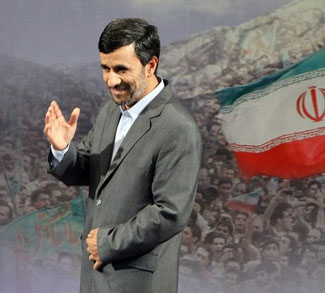In the early part of 2020, the Center for Preventive Action named 26 conflicts to its Global Conflict Tracker that were of particular concern to the United States (US). While improvements have been noted regarding some ongoing conflicts around the world, others continue, while some have worsened, and others still have yet to be added to the list. Progress has recently been made in the Nagorno-Karabakh conflict between Armenia and Azerbaijan. In November, both countries signed a Russian-brokered ceasefire that brought an end to weeks of violent engagement in a much longer threat of violent conflict. An escalation in tension and conflict had been observed in Kashmir and Mozambique while concerns about the resurgence of violence in areas where violent conflict has become a familiar occurrence are similarly on the rise. There is also substantial disquiet about the prospect of hostilities either erupting or accelerating in Afghanistan, Venezuela, Yemen, Western Sahara, Burkina Faso, the Central African Republic (CAR), and Ethiopia’s Tigray region. In each of these cases, the primary end is to end conflict and bring the warring parties to negotiate a post-conflict peace and some form of post-conflict societal reconstruction
One question that has been at the forefront of post-conflict discussions is whether consociationalism or centripetalism is more beneficial at mending and rebuilding societies after a conflict. These two theories were formulated to assist nations in moving on from violent conflict in a democratic and non-aggressive way, but both take on this task in a very different manner. Our aim is to describe both the positives and negatives of each theory, arguing that centripetalism needs to be used more in post-conflict scenarios because of some of the severe drawbacks that consociationalism creates, such as political immobilism and corruption. Although consociationalism, in theory, offers many realistic means by which to help mend fragile and divided societies, in practice, it offers short-term relief to help solve or ameliorate conflict. Centripetalism, on the other hand, can bring long-term solutions because it promotes moderation and multi-ethnic inclusion within its government. This, in principle, would then help to reconstruct society after a conflict, whatever the length of that conflict may have been, producing a more cohesive post-conflict society that is less likely to breakdown into war again.
In his 1969 article, Arend Lijhart coined the term “consociationalism,” and since then, the theory has taken hold in the international community and is argued by Rupert Taylor in his work, Consociational Theory, to be one of the strongest solutions to rebuilding a society after civil conflict. Consociationalism has been used in many societies, such as after the conflicts in Bosnia-Herzegovina, Northern Ireland, and Cyprus. It attempts to represent all major ethnicities proportionally within the governmental system through its use of grand coalitions and group autonomy, leading to the elimination of majority rule, writes Lijphart, with the goal of turning a “fragmented political system into a stable democracy.” Through the idea of power-sharing, it has attempted to lead to cooperation among the elites of different ethnic groups, but instead, has led to divisions amongst different ethnicities being fostered, as well as facilitating corruption, political immobilism, and the introduction of rebel groups into the government. Although the theory has been used in a vast array of conflicts due to its use of grand coalitions, mutual vetoes, group autonomy and quotas in civil service, it has proven inadequate in completely solving the ethnic divide created through the war, seen again in post-conflict Bosnia.
One reason that consociationalism has never been able to settle ethnic divides created after a conflict is because it leads to renewed tensions between groups, instead of solving them. This issue can be seen in a case study of Lebanon. After the civil war from 1975-1990, Lebanon used consociationalism to re-design its political system, which resulted in all 18 major groups in the country having political representation. With these groups being granted mutual vetoes and a significant amount of individual rights, political deadlock resulted. This was especially seen between 2014 and 2016 when the Lebanese government was unable to elect a President because of the inability of the distinct 18 groups to compromise with one another. Although consociationalism has brought a degree of stability to the country and its work in Lebanon is classified as a success story for the theory, it lacks the ability to bring diverse groups together to form a working government, as Taylor states. Although consociationalism, in theory, should solve many problems that arise during post-conflict rebuilding, it has yet to fully prove to be a successful theory that should be implemented, demonstrating the need for centripetalism to be used more in post-conflict societies.
What made consociationalism so prevalent in the latter part of the 20th century was the belief that it would help distribute power amongst the top ethnically diverse elites, who would subsequently share power equally within the country, bringing the populace together as one strong nation-state. Although there have been some success stories for the theory, such as in Northern Ireland, these successes are few and far between as a result of the certain circumstances that are necessary for the theory to work well. These, as Arend Lijphart writes in “Consociational Democracy,” include finding a common goal that all of the elites of different ethnicities can support, having a strong commitment between groups for the improvement of their state to bring coherence and stability to the government, and for the elites to have the ability to accommodate the interests and demands across cultures. Consociationalism has been implemented in countries such as Bosnia-Herzegovina, and although it was able to prevent one group from dominating the other, it led to political immobilism and a stronger division between groups. The fact that the theory has proved a constructive means of managing conflict has overshadowed its inability to solve it. In the short-term, consociationalism works well to broker deals amongst opposing sides and to establish an equally representative government that does not favor a particular ethnicity over another, but in the longer-term, it remains inadequate for solving long-standing conflicts between ethnic groups, which is what it aspires to do.
This inability to solve long-standing conflicts between ethnic groups is demonstrated with the death of former Serbian President, Slobodan Milošević, and the end of his trial at the International Criminal Tribunal for the Former Yugoslavia (ICTY) in 2006. With the trial ending without a verdict, Milosevic was celebrated as a martyr and a war hero back home in Serbia, while to many Bosnians and people of other ethnicities, he was seen as a murderer. This result exemplifies the struggle that consociationalism has with bridging the gap between two ethnic groups that have historically opposed one another. Power-sharing in the Bosnian government had first been set-up in 1995, after the Dayton Peace Agreement, with the hope of calming tensions between the three main ethnic groups; the Bosnians, Serbians, and Croats; yet, after Milošević’s death 11 years later, negative sentiments between these three groups are still alive and thriving. These attitudes never actually dissipated, even after the re-designing of the Bosnian parliament toward a more consociationalist approach, which powerfully demonstrates the failure of consociationalism to help solve post-conflict tensions between the three ethnic groups. This theory was specifically implemented to help dissolve tensions and to make the populace come together under one government, but the continued presence of Serbian nationalism goes a long way in demonstrating the lack of success that consociationalism has garnered.
Centripetalism, in contrast, suggests that it is impossible to erase ethnic conflict, so it chooses to focus on fostering alliances and moderation while de-politicizing politics, leading toward multi-ethnic inclusion within political parties and the government more broadly. Although centripetalism has been implemented in Papua New Guinea, India, and partly in Fiji, the largest drawback to the theory is that it has not been properly employed, in comparison to consociationalism. With centripetalism being a newer theory, it will take time for it to harvest attention on the international stage and to be applied to a great extent in post-conflict scenarios. The strongest component to centripetalism is its ability to force politicians to appeal to voters across different ethnicities, leading to the government having to accommodate them, and thus, being more ethnically fluid and understanding. Donald Horowitz, the creator of centripetalism, reasons that, “in a severely divided society, it is paramount to encourage compromise and accommodation, which moderates are more likely to achieve than are those with completely opposite programs.” This theory fosters cooperation, instead of power-sharing, attempting to close the barrier between different cultural groups, encouraging alliances, and helping to de-politicize ethnicity, instead of managing conflict and not solving it, as does consociationalism.
With consociationalism often failing in practice to solve any long-standing divisions between ethnic groups, it is apparent that although the theory offers significant help in the short-term phase of restructuring the government, centripetalism should be used to foster political integrity and cooperation, ensuring that all ethnicities have a say in the government, without the use of proportional representation. Consociationalism often results in the corruption of many elites, political immobilism, and the integration of rebels into the government because of the dominance of nationalistic organizations, which only leads to the loss of political accountability and stagnation of the country. Centripetalism, in contrast, leads to political moderation and compromise between ethnic groups, with the goal of creating a government that will not only represent the majority of the populace, but will also be accountable and function properly.




